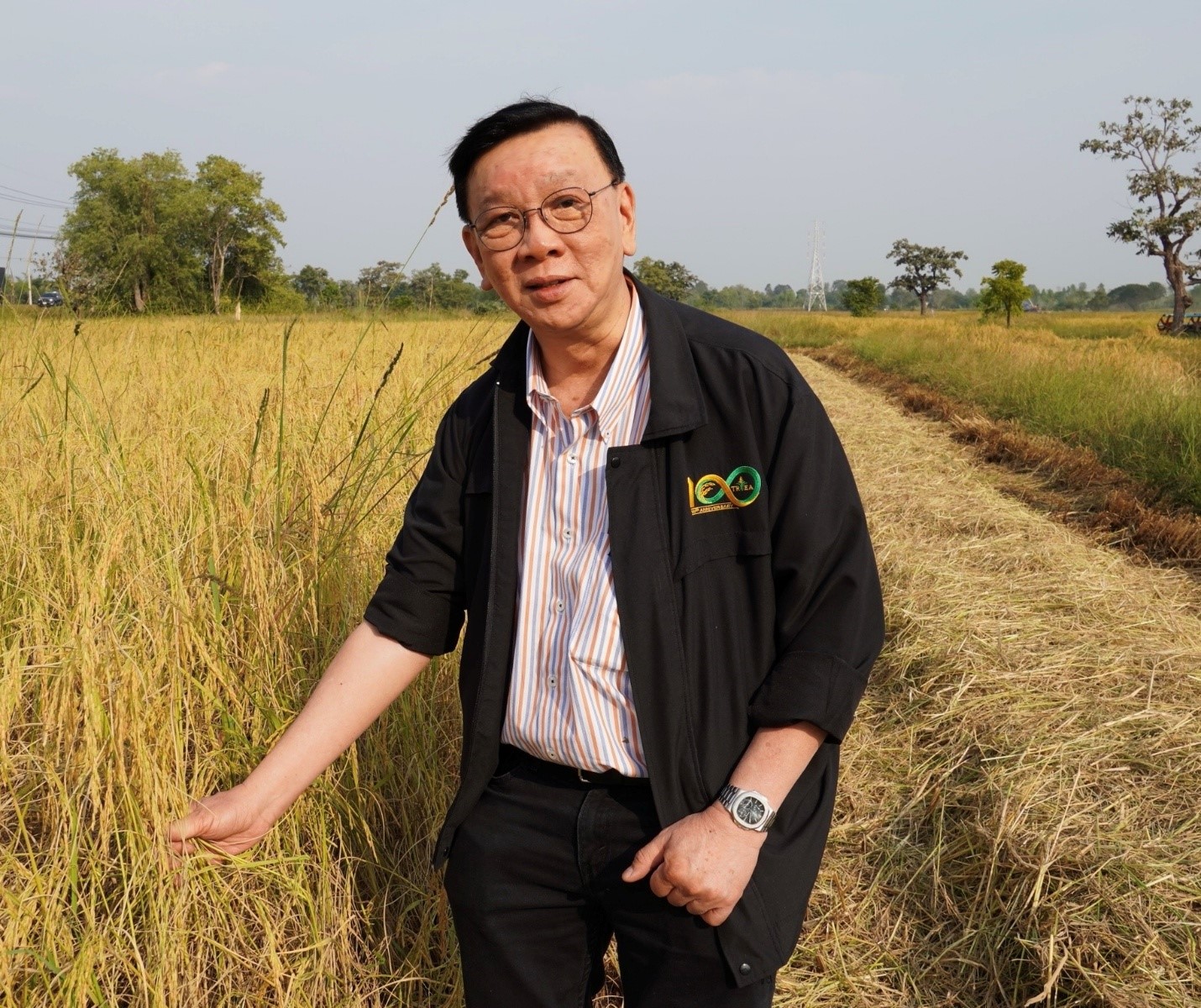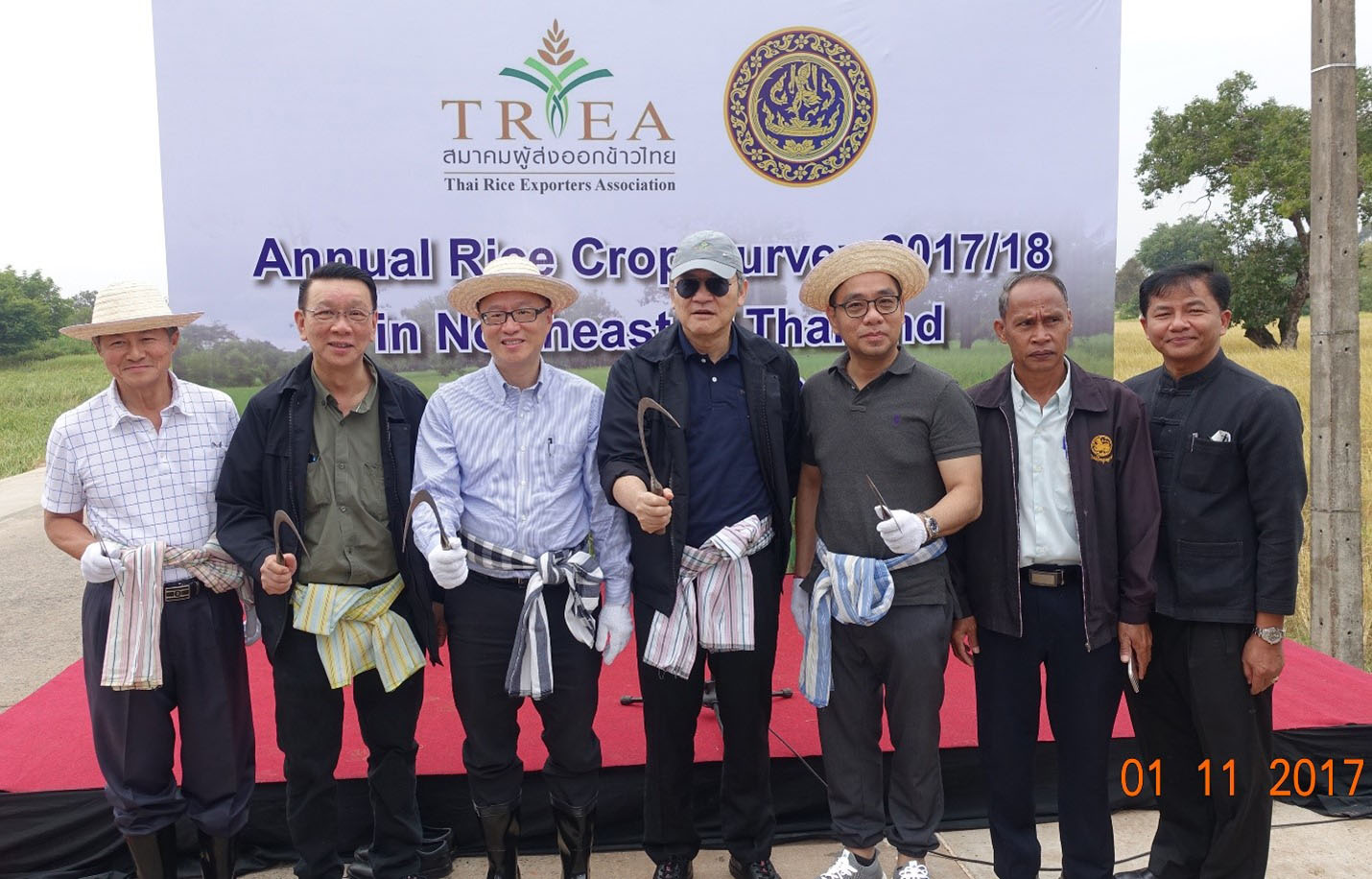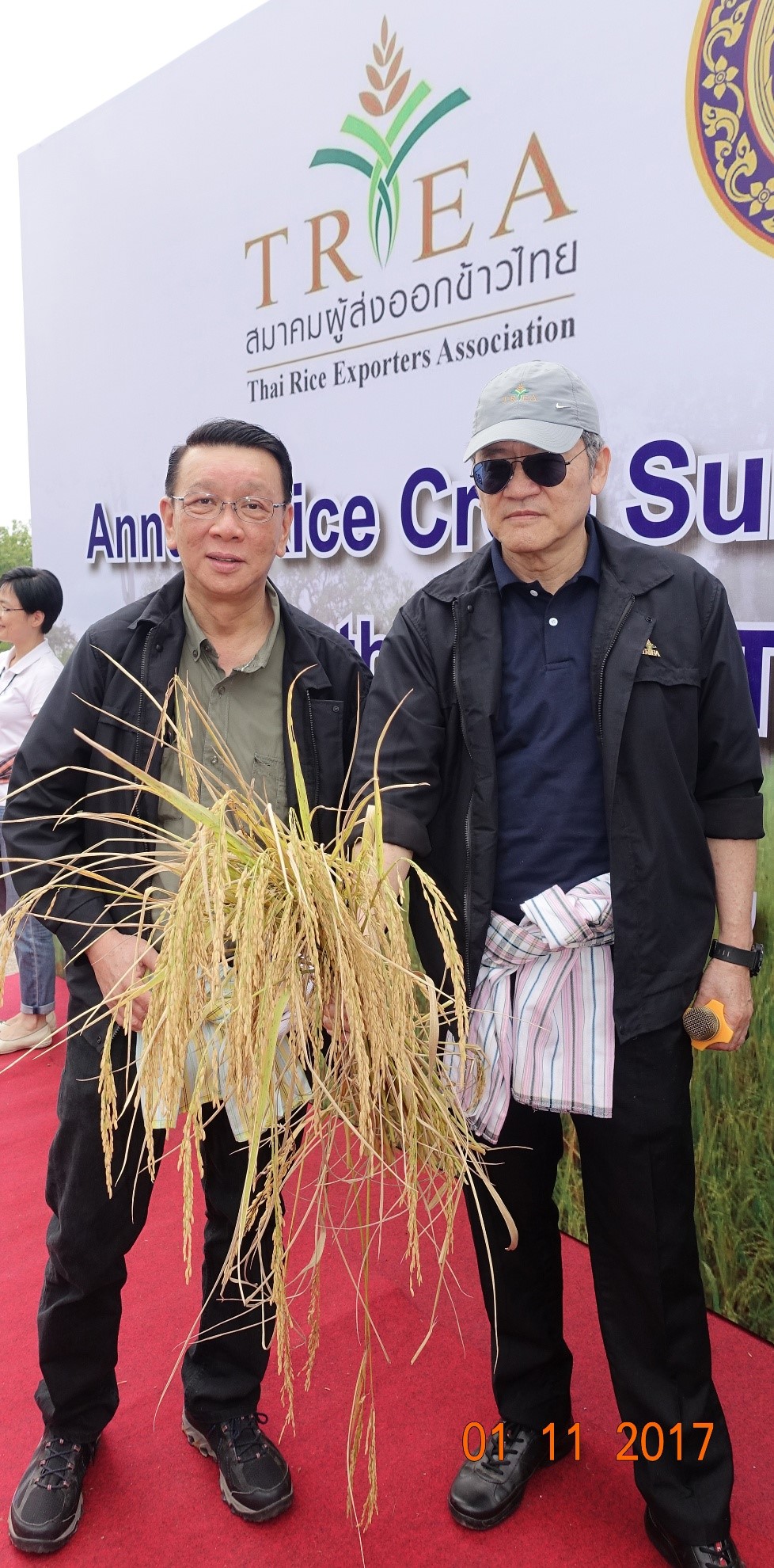World Rice Industry and The Rice Story of Khun Chookiat.
1. The beginning and observations over 4 decades in Thai rice exports
Khun Chookiat has been in rice industry for a long time, since graduation age 25, on return to Bangkok, and brought into family business immediately from 1985 till now.
Observations on Thai rice market then and now – from small 2 MMT exporter to current 9 MMT exporter with several layers of change dictating Thai rice markets. Gone through several stages of development in Thai rice over 40 years, from an exporter of 2 MMT or less in 80s to 8-9 MMT of today. Khun Chookiat saw the gradual rise of Thai rice exports, and even one year when 12 MMT was exported, during a period when old rice stocks from the Thai rice pledging scheme was made available, to support a massive additional sale, especially to African markets. 8-9 MMT is seen as a good average for today.

2. Experienced several layers of change in Thai rice markets.
The 80s; less competition and more cooperation towards business success. From the 1980s, Khun Chookiat observed that less than 30 export companies were in the business of rice exports and described the business as good. This was a period of reduced competition, with a more cooperative environment that supported business success. Procurement was also seen to be easier, as communication was slower and less accessible compared to today, and this allowed companies to take advantage of information gaps, which have gradually eroded with time.
Periods of weak production and enforcement of rice export quotas. There was a period of 1-2 years of export quotas when Thai production was low. This was when the Thai government applied quotas on rice exports, quotas that were enforced by the Ministry of Commerce.
Since 2000, Thai exports grew steadily and attracted competition. Khun Chookiat said that Thai rice export volumes regularly rose but was also a period when the global rice markets attracted more competition. The Thai market, used to require exporters to be members of the Thai Rice Exporters Association (TREA) as a prerequisite, but this was removed, together with reductions seen in capital requirements (from THB 5 million to THB 1 million). This delivered more competition and intensity in competition both within Thailand’s rice industry and in global export markets.
Emergence of other origins, like Vietnam, as an example, was a rising competitor in markets, but quality was not as good as Thai, and this allowed $30-40 PMT discounts for Vietnam’s emerging export. These price discounts between origins, while recognizing quality differences, added more competition against Thailand in markets.
3. The Rice Crisis Year, TREA Presidency needed hard work to maintain Thai rice exports.
The biggest moment in Khun Chookiat’s career was described as during the rice crisis year of 2008. The rice crisis, while born from India’s export ban in late 2007, felt more heat in markets when markets like the Philippines kept buying, and pushed prices to show $1000 PMT prices for WR 5% as an example. These shifts intensified markets and delivered what was a highly pressurized marketplace in world rice. There were lots of voices calling for a stop to rice exports, and pressure from the need to meet domestic needs. This was a time when Khun Chookiat, as President of the TREA took on lots of press interviews (12 or more in a day) and worked hard to reinforce Thailand’s position as a supplier. Travel to Hong Kong and Singapore were examples of when the TREA, represented Thai rice exports in efforts to assure markets of Thailand’s supplies in markets. Simply put, this period was the biggest challenge faced by Khun Chookiat as President of the TREA.

4. Rice pledging scheme opens the door to more competition.
Khun Chookiat described the Thai rice industry as having seen lots of changes, changes from political shifts, and this was where the intervention (rice pledging scheme) was a highlight. This scheme, while expected to provide shade to the Thai rice industry, ended up crippling Thai rice exports to fall from 8 MMT levels to 5 MMT levels due to the competitive impact from these changes. The rice pledging scheme opened the door to competitors to Thai rice and provided an undercurrent that saw regional export markets flourish, at Thailand’s expense.
More intense competition today – a spillover effect of the rice pledging scheme.
Khun Chookiat revealed that markets are more intense nowadays. Competitors has risen, and this is likely due to the rice pledging scheme, which acted to protect Thai markets as an “umbrella” to shade Thai markets. This instead had the effect of promoting exports from global competitors, who grew to deliver more intense competition which continues to be seen in markets today. In the end, the Thai market environment assisted markets like Vietnam, which impresses Khun Chookiat, as a market that has made strides in developing its rice industry. From R&D, development of good premium quality rice varieties, Vietnam was rising to compete with Thai rice. Khun Chookiat described meetings with Vietnamese government officials who left this impression of progress and a strong effort. This impression is not misplaced as Vietnam is now an 8 MMT rice exporter and just shy of Thailand - a major change that Thai rice markets continue to deal with today. Khun Chookiat noted that Vietnam’s impressive rise from an importer in 1985 to today’s position as a leading export origin for rice, often competing toe-to-toe with Thailand in certain rice grades.
Thailand needs to improve productivity and make changes but faces the challenge of regular changes in government.
Khun Chookiat emphasized the need for Thailand to improve. Increasing productivity, was highlighted together with the need to change and adapt to market conditions, as these efforts would take time, but remain necessary for Thai rice markets to progress. Regular changes in the Thai government remains a challenge which was noted as having cast doubt to how quickly Thailand can make these changes to improve Thailand’s position in global rice markets.
5. What would you think the Thai rice industry needs to focus on in the future?
India’s ban delivered a rainbow year in terms of price, but will it last, policy needs to support progress in Thai rice industry for the long-term. Policy and inability to keep a consistent policy for rice is a worry. Thai people think that Thai rice is the best in the world, and this idea, seems to breed complacency as there is a risk from doing nothing. Khun Chookiat wants to see more development and efforts in improving varieties, and points to the example of Vietnam, as a market that has invested in varietal developments (jasmine, fragrant and soft cooking rice, that consumers like) and over a shorter growing period (comparing 120 days Thai planting period compared to Vietnam’s 90-95 days), and productivity to improve production yields. High costs (labour, logistics as examples) also drive Thai prices higher, especially with yields and productivity gains seen as not available to support these rising costs. Thailand needs to learn to convince the broader Thai market, especially the government to support efforts. Rice prices (at the time of interview) were seen high and attractive as a consequence of India’s rice export ban, and the white rice exports banned by India benefited Thailand (and Vietnam). Nobody knows how long this ban will remain. When India returns, prices will have to drop as Thailand will not be able to export as much. The government may also be unable to do much.
6. Thailand has a good reputation in world markets not only for the quantity of exports but from quality and delivery commitments. This is the hard work of members of TREA. How are members connected and working as a team?
Leadership is important, as Presidents before and after Chookiat have provided a strong base for Thai rice exporters to benefit from leaders who think beyond themselves for the common good or collective good as an industry. Information sharing, TREA is regarded by past governments as a capable association in trading and have often listened to TREA suggestions. This delivers a “team” mentality, to show cooperation between the leaders, board of directors and members to work towards these goals. TREA presence at events, presentation at events and communication provides a fundamental tool together with leaders to encourage members.




© Copyright 2025 The SSResource Media.
All rights reserved.